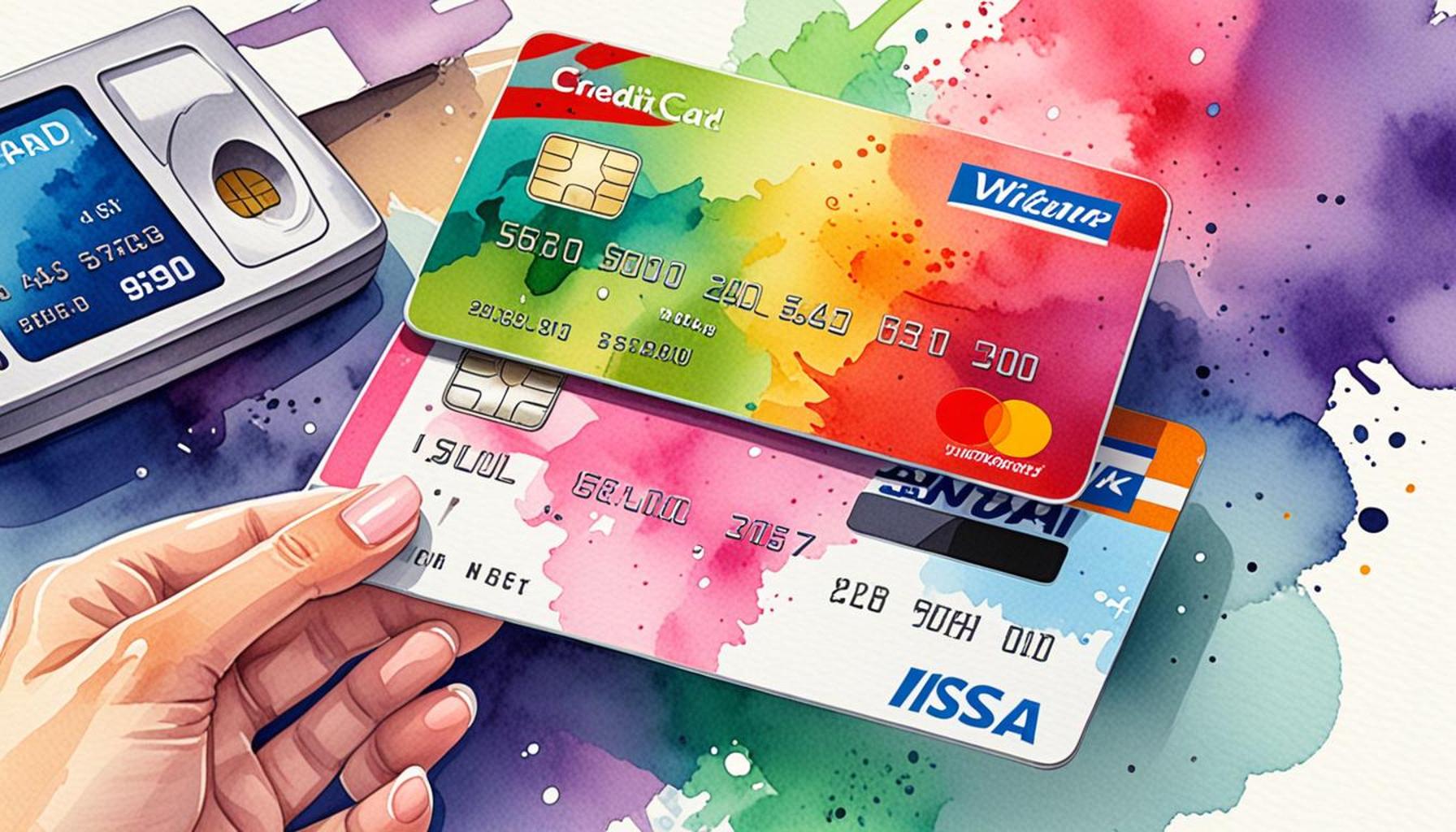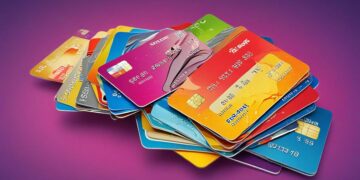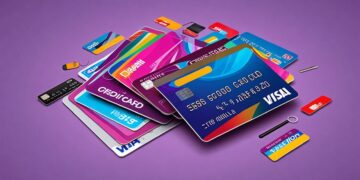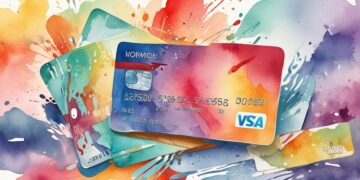How a Credit Card Works: A Beginner’s Guide

Basics of Credit Cards
Understanding how a credit card works can be a game-changer for managing your finances. It’s not just a plastic card; it offers convenience, flexibility, and potential rewards. However, it can also lead to debt if not used wisely. Grasping the details will help you make informed decisions that can enhance your financial health.
Essential Features of Credit Cards
To maximize the benefits of a credit card, you need to know its essential features, including:
- Credit Limit: This is the maximum amount you can borrow on your credit card. For instance, if your credit limit is $5,000, you can charge purchases up to that amount. Going over this limit can incur extra fees or penalties.
- Interest Rates: Most credit cards charge interest on any outstanding balance carried over from month to month. This is typically expressed as an Annual Percentage Rate (APR). For example, if your balance is $1,000 and your card has a 15% APR, you could end up paying up to $150 annually in interest if the balance remains unpaid.
- Rewards and Cashback: Many cards offer perks for spending, such as points for travel, gift cards, or cashback options. If you frequently travel, a card that provides air miles can help save on flights. If you dine out often, look for cards that give cashback on restaurant spending.
The Financial Responsibility of Cardholders
When you use a credit card, you’re essentially borrowing money from the issuer with the condition that you’ll pay it back. You typically need to pay this back within a month to avoid interest charges. For example, if you spend $700 using your credit card, you must ensure that you either pay the entire amount by the due date or make a minimum payment to avoid accumulating interest. Understanding your responsibilities as a cardholder is crucial for maintaining good credit health.
Using Credit Cards in Australia
In Australia, credit cards can also be linked to various payment services, such as Apple Pay or Google Pay, making transactions easy and fast. This means you can make purchases directly from your smartphone without needing the physical card. However, be cautious; spending more than you can afford can lead to financial troubles, impacting your credit score and future borrowing capacity.
Conclusion
By breaking down the workings of credit cards, we aim to equip you with the knowledge necessary to use credit cards responsibly and effectively. It’s essential to understand how your spending habits can affect your financial future. Make informed decisions, keep track of your finances, and use your credit card as a tool for building a beneficial credit history rather than a source of debt. With careful planning and awareness, credit cards can work for you instead of against you.
Understanding Credit Card Components
To fully utilize a credit card, it’s essential to understand its key components and how they work together. These elements play a significant role in your overall credit experience and can influence your financial health.
Types of Credit Cards
There are several types of credit cards available, each catering to different spending habits and needs. Here are the main categories:
- Standard Credit Cards: These are the most common type and provide a straightforward way to borrow money for everyday purchases. They typically have a fixed credit limit and may charge annual fees.
- Rewards Cards: Designed for those who want to earn benefits from their spending, rewards cards provide points, miles, or cashback for purchases. They are ideal for regular spenders, especially in specific categories like travel or groceries.
- Low-Interest Cards: If you anticipate carrying a balance, low-interest credit cards can save you money with a lower APR. This makes them a suitable option for individuals looking to manage existing debt more efficiently.
- Student Credit Cards: These cards are specifically tailored for college students, providing a way to build credit history without overwhelming fees or high credit limits.
How Credit Cards Work
When you make a purchase with a credit card, you are essentially borrowing money from the card issuer. The issuer pays the merchant on your behalf, and you are then responsible for repaying that amount. Here’s a step-by-step breakdown of how transactions occur:
- Swipe or Tap: You make a purchase using your credit card at a store or online.
- Authorization: The merchant sends the transaction details to the card network (like Visa or Mastercard), which passes it on to your card issuer for approval.
- Approval and Payment: If your credit limit and account status allow, the transaction is approved, the merchant receives payment, and the amount is added to your balance.
- Monthly Billing: At the end of each billing cycle (usually a month), your card issuer will send you a statement detailing all your purchases, the total amount owed, and your due date for payment.
The Importance of Payment Timing
One critical aspect of using a credit card effectively is understanding payment timing. If you pay your balance in full by the due date, you will typically avoid interest charges altogether. However, carrying a balance can lead to significant financial strain, as interest compounds over time. For example, if you have a balance of $1,500 with a 20% APR, you might end up paying an additional $300 in interest over a year if you only make the minimum payments.
In essence, the responsible management of your credit card use, including timely payments and mindful spending, can lead to an improved credit score and greater financial freedom. Understanding these fundamental components will empower you to navigate the world of credit cards confidently.
Managing Your Credit Card Wisely
Once you have a grasp of how credit cards work, it’s crucial to focus on management strategies that will help you use them effectively. Proper management not only protects you from financial pitfalls but also enhances your credit score over time.
Credit Limits and Utilization
Your credit limit is the maximum amount you can borrow on your credit card. This limit is determined by your credit issuer based on various factors, including your income, credit history, and repayment ability. Understanding how to manage your credit limit is vital for maintaining your financial health and avoiding potential penalties.
Credit utilization, which is the percentage of your available credit that you are currently using, plays a significant role in your credit score. It is recommended to keep your credit utilization ratio below 30%. For instance, if you have a credit limit of $2,000, try to keep your balance under $600 at all times. Maintaining a low utilization ratio reflects responsible credit management, which can boost your credit score.
Understanding Fees
While credit cards offer many benefits, they can also come with various fees that, if overlooked, can add up quickly. Here are some common fees to be aware of:
- Annual Fees: Some credit cards charge an annual fee for maintaining the account. It’s essential to weigh this cost against the rewards and benefits offered by the card.
- Late Payment Fees: Failing to make at least the minimum payment by the due date can result in hefty late fees and negatively impact your credit score.
- Foreign Transaction Fees: If you plan to use your card overseas, be aware that some cards charge a fee for transactions made in foreign currencies. Look for cards that waive these fees if you travel frequently.
Rewards and Benefits
For those who choose a rewards card, understanding how to maximize these benefits can lead to significant savings. Common types of rewards include:
- Cashback: You earn a percentage of your spending back as cash. For example, if you spend $500 in a month on a cashback card offering 1.5% back, you would receive $7.50 as a rebate.
- Points and Miles: These can often be redeemed for travel, gift cards, or merchandise. Some cards offer bonus points for spending in specific categories, such as dining out or shopping.
To make the most of these rewards, it’s beneficial to align your spending with the categories that earn the most points or cash back. Just ensure you are not overspending to earn rewards, as that can lead to more debt.
Building Credit History
Using a credit card responsibly can help you build a good credit history, which is essential for future financial endeavors, such as getting a home loan or an auto loan. To build a solid credit history:
- Make payments on time, as timely payment history accounts for a significant portion of your credit score.
- Keep your balances low relative to your credit limit.
- Consider keeping your card active even if you aren’t using it frequently, as this can contribute to your credit utilization ratio and show lenders that you can manage credit responsibly.
By understanding these aspects and utilizing your credit card wisely, you can enhance your financial literacy and lay a strong foundation for your financial future. The key is to remain informed and make decisions that align with your long-term financial goals.
Conclusion
Understanding how credit cards work is a crucial step towards effective financial management. Being well-versed in key concepts such as credit limits, credit utilization, and potential fees allows you to make informed choices that positively impact your financial wellbeing. For instance, knowing your credit limit—the maximum amount you can borrow—is essential in preventing overspending, while maintaining your credit utilization ratio below 30% is advisable for protecting your credit score.
It’s vital to keep a close eye on the costs associated with credit cards, such as annual fees, late payment fees, and foreign transaction fees. These charges can quickly accumulate, leading to a slippery slope into high-interest debt. For example, if you miss a payment due date, not only does it incur a fee, but it can also impact your credit rating for years. To avoid such pitfalls, set up reminders or automatic payments to ensure your obligations are met on time.
On the positive side, credit cards offer a range of benefits, including cashback rewards and travel points, which can enhance your purchasing experience when used judiciously. For example, if you frequently travel, using a credit card that offers points for flights or hotel stays can significantly reduce your travel costs. However, it’s essential to remain within a manageable spending limit to maximise these advantages without jeopardising your financial health.
Implementing proper management strategies, such as making timely payments and understanding your credit score, is fundamental to building a strong credit history. A solid credit history not only helps you qualify for better credit products in the future but can also lead to lower insurance premiums and better rates on loans. Remember, using a credit card can be a double-edged sword; while it offers convenience and rewards, it carries risks if not handled carefully.
As you engage in the world of credit cards, arm yourself with knowledge and make choices that align with your long-term financial goals. By doing so, you can navigate through potential challenges confidently, transforming credit into a valuable tool for your financial future in Australia.

Linda Carter is a writer and financial expert specializing in personal finance and financial planning. With extensive experience helping individuals achieve financial stability and make informed decisions, Linda shares her knowledge on the Take Care Garden platform. Her goal is to empower readers with practical advice and strategies for financial success.





